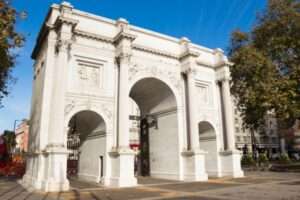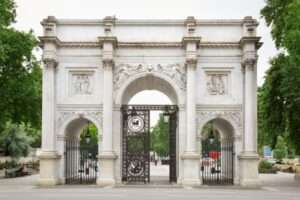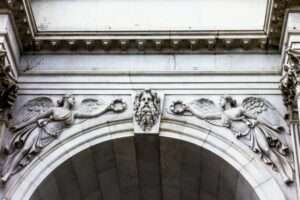London, one of the most history-rich cities in the world, is home to a plethora of iconic landmarks that encapsulate centuries of past events and cultural shifts. Among them stands the Marble Arch, a monument whose name is as descriptive of its form as it is evocative of its history.
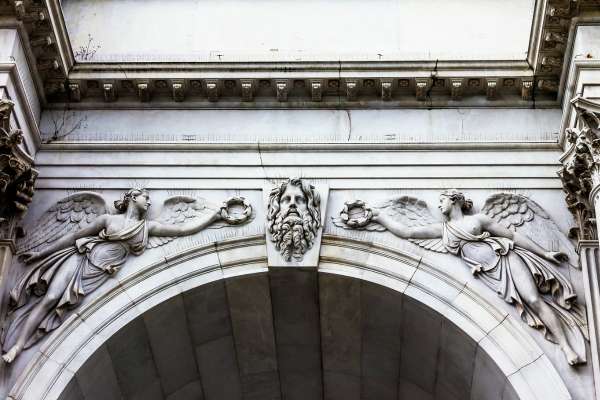
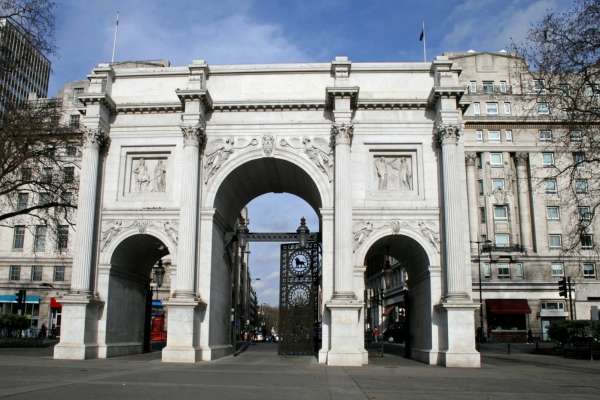
Origin and Architectural Design
The Marble Arch was designed in 1827 by John Nash, one of the foremost architects of the Regency and Georgian eras. The design of the arch was inspired by the Arch of Constantine in Rome, a triumphal arch dedicated to Emperor Constantine I in the fourth century. Nash’s creation was part of a larger plan commissioned by King George IV to embellish London with grand, classically styled buildings and monuments.
Originally, the Marble Arch was intended to be the grand gateway to the newly expanded Buckingham Palace. Nash envisioned it as the ceremonial entrance to the royal courtyard, befitting the king’s triumphant returns. However, the Arch was never used for its intended purpose due to the expansion of Buckingham Palace by Edward Blore, which saw the structure relocated.
The Marble Arch’s Relocation
In 1851, the Marble Arch was painstakingly dismantled and relocated to its current location at the northeastern corner of Hyde Park, at the junction of Oxford Street and Park Lane. The reason for this move was the construction of the east wing of Buckingham Palace, which necessitated the removal of the arch.
The location of the Marble Arch has significant historical value. It stands near the site of the infamous Tyburn gallows, a place of public execution from 1388 to 1793. It is said that the arch was deliberately placed here as a symbol of the transition from a brutal past to a more refined present. Find out about the first person executed at Tyburn.
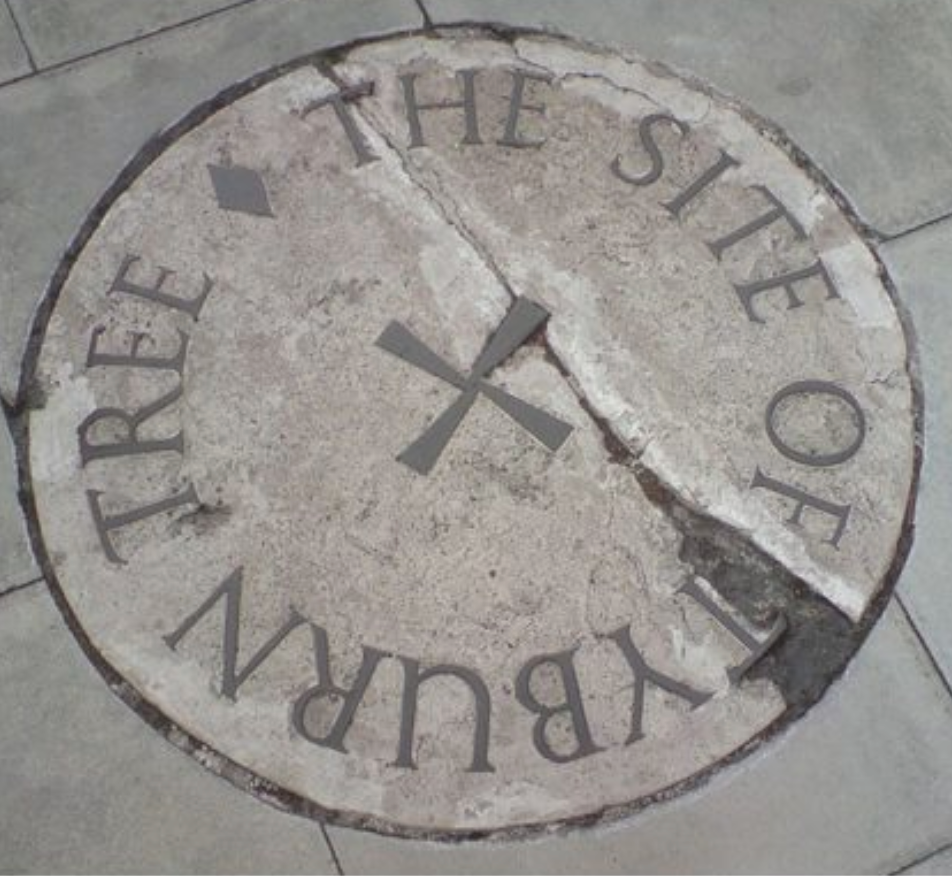
The Marble Arch and Tyburn Tree
The Arch’s location near the site of the ‘Tyburn Tree’, a triangular gallows where public executions took place, is a stark reminder of London’s grim past. As many as 24 convicts could be hanged simultaneously, making the Tyburn gallows a gruesome spectacle for Londoners throughout the centuries.
However, since the last execution in 1783, the site began to change drastically, and the Marble Arch played a significant role in this transition. It stood as a strong contrast to the dark history of Tyburn, symbolizing refinement, dignity, and the city’s progression.
Present Day
Today, Marble Arch is more than just a historical monument. It’s a bustling hub of activity at the intersection of some of London’s busiest streets. The area around the Arch is popular with tourists and locals alike, with the vast expanse of Hyde Park on one side and the beginning of Oxford Street, known for being Europe’s busiest shopping street, on the other.
Despite being in the heart of modern London, the Marble Arch continues to stand as a testament to the city’s rich past. As visitors stand beneath the towering Carrara marble structure, they are offered a momentary glimpse into the grandeur, intricacies, and sometimes gruesome past of one of the world’s greatest cities.
Marble Arch, London, is a living testament to the city’s evolving narrative. With its grand architecture, historical significance, and present-day function, it serves as a reminder of how London has grown and changed over the centuries. Yet, amid this evolution, the Marble Arch stands firm, a stoic observer of London’s unfolding history.

Listen to London History Podcast Episode 114: Buckingham Palace


